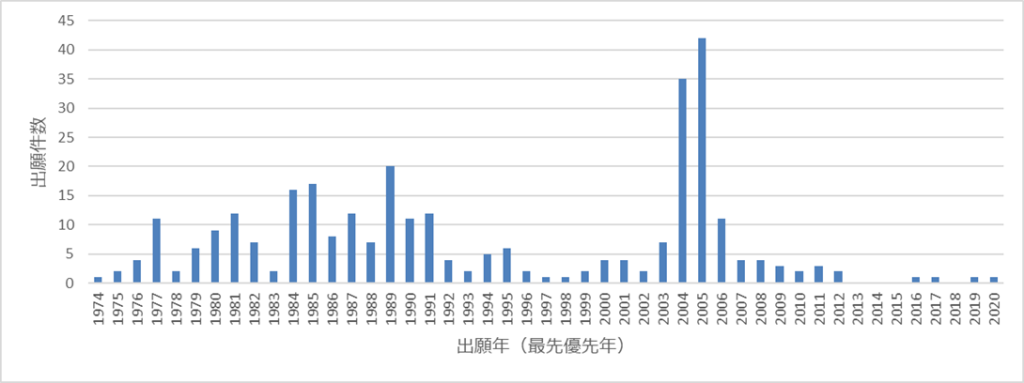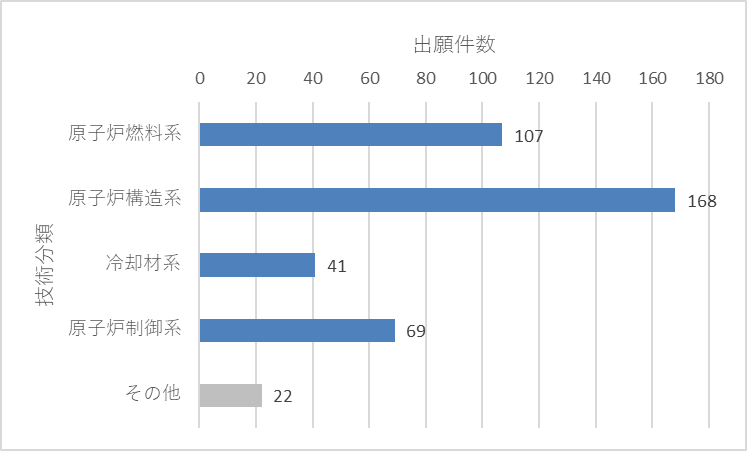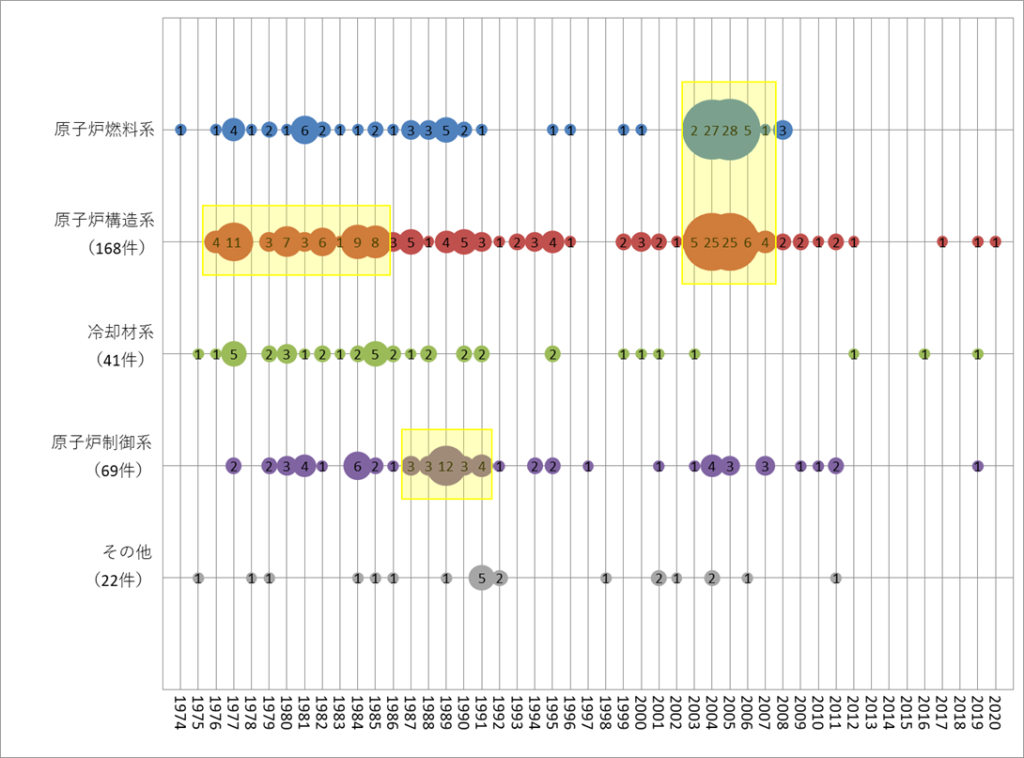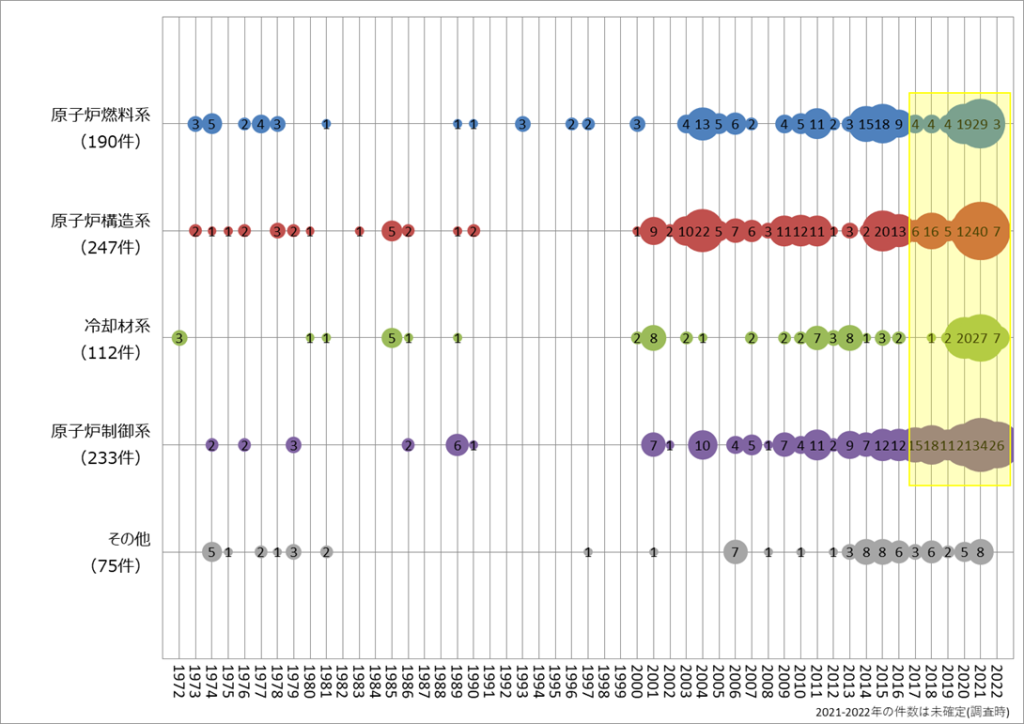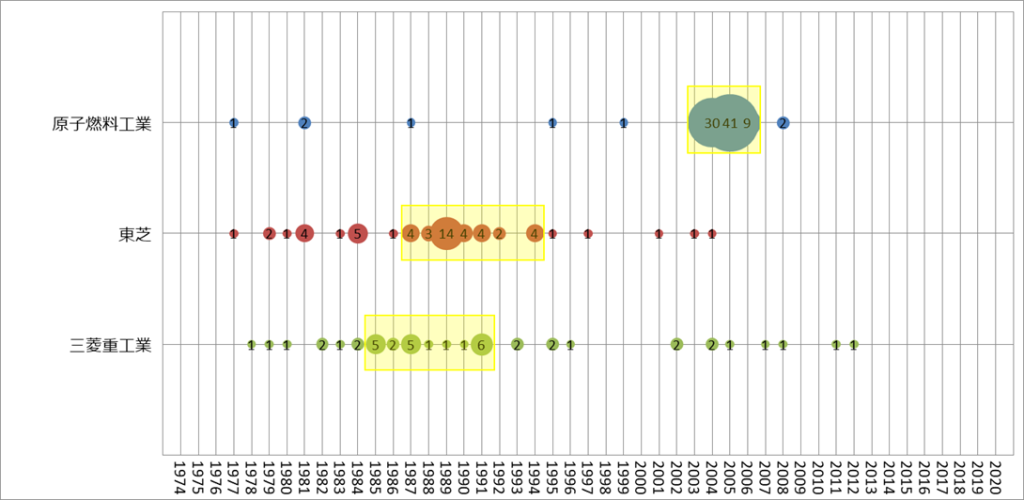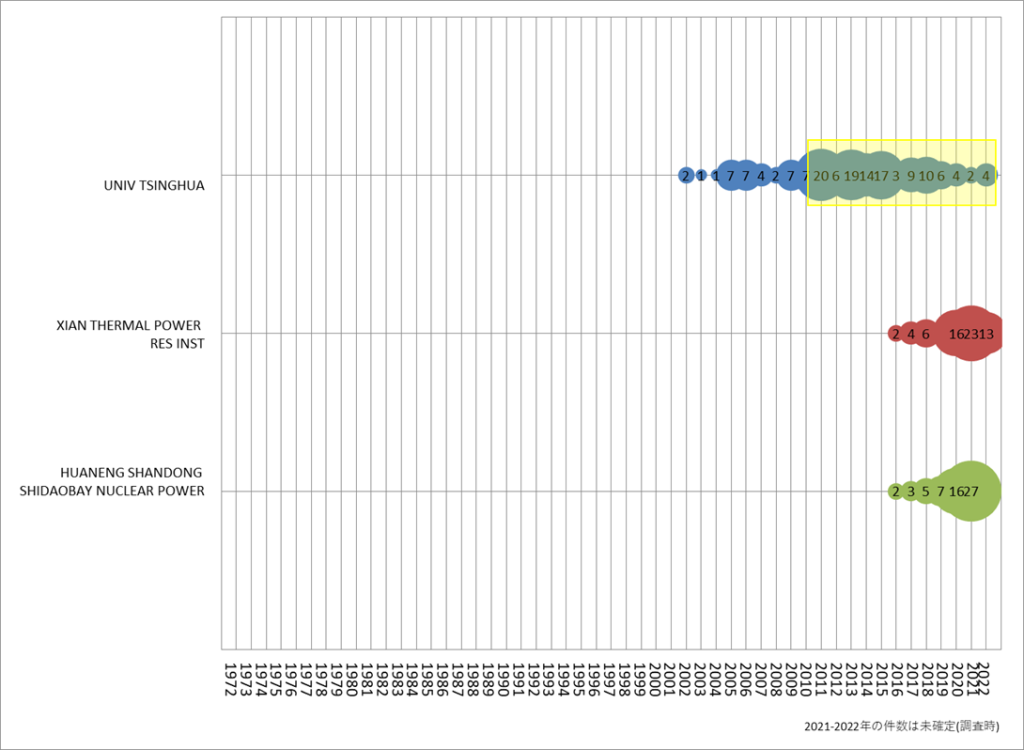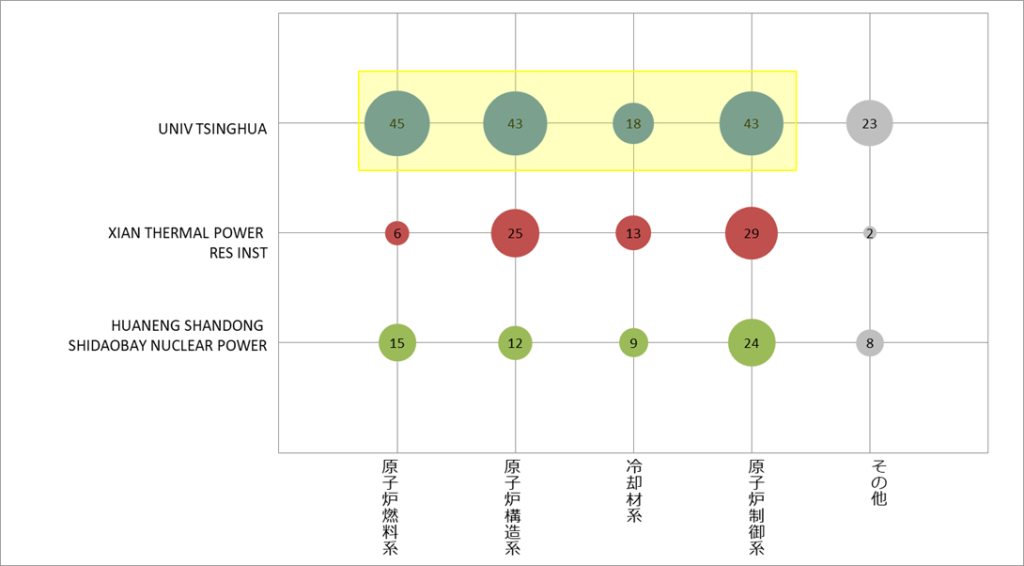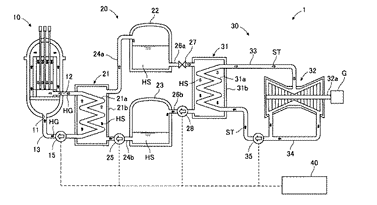(Short report) Search on patent application trends for “high-temperature gas furnaces”
2024.02.01 | search column
table of contents
XNUMX. XNUMX.Search background
If we are to achieve carbon neutrality, we cannot avoid nuclear power generation, which does not emit as much carbon dioxide as thermal power generation and has a stable supply capacity. However, following the Fukushima Daiichi Nuclear Power Plant accident in 2011, it has become difficult to increase the number of large light water reactors.
Under these circumstances, in July 2022, the Ministry of Economy, Trade and Industry began considering creating a roadmap for the development of next-generation nuclear power plants such as high-temperature gas reactors (HTGRs), which are said to have a high level of safety. news was seen※ 1. Mitsubishi Heavy Industries has announced that it will mass produce hydrogen using a high-temperature gas reactor (HTGR) in April 2022.※ 2In July 2023, it was selected as a core company for the development of a high-temperature gas reactor demonstration reactor promoted by the Ministry of Economy, Trade and Industry.※ 3, positive trends can be seen. As described above, high-temperature gas furnaces are currently attracting attention.
In addition, in the UK, the government is providing approximately 250 billion yen in subsidies for the development of next-generation nuclear reactors, including high-temperature gas reactors; in the US, a startup company, X-energy, has developed a high-temperature gas reactor, which the government fully supports; However, high-temperature gas reactors are attracting attention around the world, with a demonstration reactor reaching criticality for the first time in 2021.※ 4.
Therefore, we investigated trends in patent applications related to high-temperature gas furnaces.
*1:From Nikkei Shimbun
*2:From Mitsubishi Heavy Industries HP
*3:From Mitsubishi Heavy Industries HP
*4:From Nikkei Shimbun
XNUMX. XNUMX.Technical overview
A high-temperature gas reactor is a nuclear reactor that uses ceramic materials, mainly graphite, as the main component of the reactor core, and uses helium gas as a coolant to extract the heat generated by nuclear fission.
The temperature that can be extracted from a light water reactor is limited to about 300℃, but by using ceramic materials with excellent heat resistance, it is possible to extract heat of about 1000℃. It is possible to obtain power generation efficiency of more than %.※ 5.
*5:From the Japan Atomic Energy Agency (JAEA) website
XNUMX. XNUMX.Search strategy (overview)
In this search, a patent population was created under the following search strategy.
- In order to understand not only domestic trends but also overseas trends, we targeted Japanese applications and foreign applications (US, EP, DE, FR, GB, CN, KR, WO).
・In IPC (International Patent Classification) "G21" from the perspective of nuclear physics and nuclear engineering, set the search range to "Abstract + Claims + Title of Invention" and search for keywords for "High Temperature Gas Reactor" with synonyms such as "HTGR" The population was created by multiplying using the following numbers (Japan: 309 applications, foreign: 701 applications).
・We ranked the IPCs in the above population, and based on the top 10 IPCs, we assigned the following classifications and used them as technical classification axes.
・Reactor fuel system (G21C19, G21C3)
・・原子炉構造系 (G21C1、G21C13、G21C21、G21C9、G21D1、G21D5)
・・Coolant system (G21C15)
・Reactor control system (G21C17, G21C7, G21D3)
<Patent classification>
○G21C 19/00 Arrangements for processing, handling, or facilitating the handling of fuel or other materials used within a nuclear reactor, e.g., within its pressure vessel [2]
○G21C 3/00 Reactor fuel elements or their assemblies; Reactor fuel materials
○G21C 1/00 Type of reactor
○G21C 13/00 Pressure vessels; Containment vessels; General storage
○G21C 21/00 Equipment or methods used specifically for the manufacture of nuclear reactors or their parts
○G21C 9/00 Configuration for emergency protection structurally related to nuclear reactor (configuration for emergency cooling G21C15/18)
○G21D 1/00 Detailed structure of nuclear power plant (control G21D3/00)
○G21D 5/00 Configuration of a nuclear reactor and power engine that converts heat generated in a nuclear reactor into mechanical energy
○G21C 15/00 Cooling system in pressure vessel with reactor core; selection of specific coolant
○G21C 17/00 Monitoring; Testing
○G21C 7/00 Control of nuclear reactions [2006.01]
○G21D 3/00 Nuclear plant control (control of nuclear reactions G21C7/00)
XNUMX.Application trends
4.1 Overall application trends
First, let's look at the trends in the number of applications. First, let's look at the application trends in Japan.
A technology that has been researched for a long time, with applications filed since the early 1970s.It can be seen that it is. Also,Rapid increase in the number of applications in 2004-2005can be seen. This is from 2004At the Japan Atomic Energy Industry Council, ``Recommendations regarding the practical development of high-temperature gas reactors''* have been made, and the high-temperature gas reactor is positioned as a nuclear reactor that should be put into practical use, and specific developments should be urgently promoted.It is speculated that the fact that there was a movement to make recommendations to the government was also related.be done. but,After that, the number of applications decreased significantly.However, there has been no sign of an increase in recent years.
Next, let's take a look at the trends in foreign applications.
Similar to JP, applications began to be filed in the early 1970s, and the number of applications began to increase in 2004. In foreign applicationsIt has continued to increase slowly since 2004, and will rapidly increase in 2021.are doing. It is estimated that the number will continue to increase in the future.
Next, we will look at the top applicant rankings. First, let's look at Japanese applicants.
produce nuclear fuelNuclear fuel industry has the most applicationsWe are doing a lot of work, like manufacturing the nuclear reactor itself.Toshiba, Mitsubishi Heavy Industries, Japan Atomic Energy Research and Developmentfollows in the ranking. Hochtemperatur Reaktorbau, the only foreign applicant in the top ranking, is a company that was once involved in the production of the THTR-300 (operated from 1987 to 1989), which was put into practical use in Germany. The applications appear to be as old as around 1980.
Next, let's look at foreign applicants.

Chinese applicants occupy the toping. In particular, the most frequently appliedUNI TSINGHUA (Tsinghua University) is using a high-temperature gas reactor independently researched and developed by Tsinghua University's Nuclear and New Energy Technology Research Institute in the Huaneng Shidao Bay High-Temperature Gas Reactor Model Project.In December 2021, the high-temperature gas furnace will be connected to the power grid and power generation will begin.※ 6. Tsinghua University will likely continue to increase the number of applications, so it will be closely watched.
*6:From JST Science Portal China
Next, we will look at the number of applications and trends in the number of applications on the technology classification axis. First, let's look at Japan.
The most applications were for "nuclear reactor structure system," followed by "nuclear reactor fuel system." The high-temperature gas reactor of this technology uses helium gas as a coolant, which is a technical difference from conventional light water reactors.There are currently not many applications for "coolant-based" applications..
As for trends in technology classification, ``Nuclear Reactor Structure Systems'' saw its first rise from the late 1970s to the early 1980s, and ``Nuclear Reactor Fuel Systems'' followed suit with a slight rise. Applications peaked around 2004 for both ``nuclear reactor structure system'' and ``nuclear reactor fuel system.''
On the other hand, the number of applications for "coolant systems" continued to be high from the late 1970s to the early 1980s, but the number of applications has been sparse since the beginning of the 2000s, perhaps because development has calmed down. ``Reactor control systems'' is the last phase of development, and applications peaked in 1989.
Next, let's look at foreign countries.
A similar trend is seen in other countries as well, with "nuclear reactor structure systems" being the most common, followed by "reactor fuel systems."
Trends in technology classification in foreign countries show a difference from Japan, with fewer applications from the 1970s to 2000. Around 2001, the number of applications started to increase.Applications for all technical classifications have been increasing since around 2018.You can see it becoming.
4.2 Application trends in the top 3 rankings
Let's take a look at the trends of the top three applicants in the rankings for Japan and foreign countries.
First, let's take a look at the application trends of the top three applicants in Japan.
Companies have been filing applications since the late 1970s. Mitsubishi Heavy Industries began actively filing applications in the early 1980s, Toshiba increased rapidly in the late 1980s, and around 2004 the nuclear fuel industry suddenly increased its applications.
Looking at the trends in technology classification, we found differences between companies. The nuclear fuel industry focuses on "reactor fuel systems" and "reactor structure systems," while Toshiba appears to have filed many applications for "reactor control systems," and Mitsubishi Heavy Industries has filed many applications for "reactor structure systems."
Next, let's take a look at the application trends of the top three foreign applicants.
Where can you see the application earliest?Continuous application at UNI TSINGHUA (Tsinghua University) since application in 2002can be seen. In particular, the number of applications has increased rapidly since around 2011, and the momentum has been visible until recently. On the other hand, XIAN THERMAL POWER RES INST and HUANENG SHANDONG SHIDAOBAY NUCLEAR POWER both have China Huaneng Group, the largest independent power generation group in China, as a major shareholder, and there has been a similar trend in which the number of applications has increased rapidly since 2020. Can be seen.
In terms of foreign technology classification trends,Tsinghua University applies in a wide range of fieldsThis shows that the company is focusing on high-temperature gas reactor technology in general. XIAN THERMAL POWER RES INST has filed many applications for "reactor structure system" and "reactor control system," while HUANENG SHANDONG SHIDAOBAY NUCLEAR POWER has filed many applications for "reactor control system."
5. Related application introduction
・Fuji Electric Co., Ltd.
Fuji Electric is collaborating with the Japan Atomic Energy Agency to conduct core design and safety analysis for Japan's first high-temperature engineering test and research reactor, HTTR.※ 7, as it is ranked 4th in the above rankings, so future trends will be closely watched. I have seen the most recent applications and will introduce them here.
○Unpublished publication 2020-197468
JP 2020-197468
"High-temperature gas furnace system and heat storage system"
[Problem] To make it possible to respond to changes in the required load while keeping the reactor output constant, and to eliminate the need to anticipate water intrusion into the reactor.
[Solution] A high-temperature gas reactor system (1) includes a high-temperature gas reactor (10) that heats the reactor core by passing helium gas (HG), and a heat storage material (10) that is heated with the helium gas heated in the high-temperature gas reactor. HS), and a load section (30) that generates and outputs steam using heat storage material heated by the heat storage system. By adjusting the amount of heat storage material supplied from the heat storage system to the load section, it is possible to extract steam energy according to the required output of the load section.
[Effects of the Invention] While maintaining the output of the nuclear reactor constant, it is possible to respond to changes in the output required of the load section. Moreover, it is possible to avoid direct heat exchange between the reactor's primary coolant and the steam (water) in the load section, eliminating the need for water to enter the reactor and improving safety. be able to.
・UNI TSINGHUA (Tsinghua University)
Since Tsinghua University has the highest number of applications and is closely related to the high-temperature gas reactor that has been put into practical use, we will introduce two of the most recent applications.
○CN112361866A
CN112361866A
“Intermediate heat exchanger for high-temperature gas cooled reactor”
[Issue] High operating temperatures occur, which not only significantly reduces the high-temperature transient fracture strength of the material, but also significantly reduces the creep and fatigue properties. , the structural type of the heat exchanger also needs to be specially designed.
SOLUTION: An intermediate heat exchanger or intermediate heat exchanger for a hot gas-cooled reactor consisting of a casing (110), a central cylinder (120), a heat exchanger assembly (130), a primary insulation layer (140) and a fan (M). A fan (M) is incorporated into the housing (110) and arranged to supply cool primary medium from the heat exchange assembly (130) towards the primary medium outlet (115).
[Effects of the Invention] The first end of the central cylinder, which is subjected to the greatest stress, has a temperature as low as possible, making it possible to prevent high-temperature creep and fatigue failure. Furthermore, it is possible to realize an integrated design of the intermediate heat exchanger, reduce the risk of failure by reducing the number of piping connections, and simplify the installation and replacement of the intermediate heat exchanger.
○CN114582538A
CN114582538A
“High-temperature gas cooled reactor absorption ball storage tank”
[Problem] In a high-temperature gas reactor that uses absorption balls that absorb neutrons released when nuclear fission reactions occur and serve as an alternative to control rods, the absorption balls are injected when the reactor is shut down, and the absorption balls are inserted before the reactor starts up. The absorption balls were returned to the storage tank using air pressure, but the measurement accuracy of the amount of absorption balls loaded in the tank was low.
[Solution] The level height of the absorption balls in the ball storage tank is measured by making the level height of the absorption balls in the ball storage tank correspond to the level height of the absorption balls in the ball drop opening, and the absorption balls in the tank are measured. Based on the level height of the ball, determine the level height of the absorbing ball within the ball drop opening.
ADVANTAGEOUS EFFECTS OF THE INVENTION By increasing the sensitivity of the preset level measurement of the absorbent ball storage tank, the measurement accuracy of the absorber ball load in the storage tank is improved, and the measurement accuracy of the absorber ball drop orifice level height is also improved.
XNUMX.Summary
Although development was underway in Japan from an early stage, patent applications peaked in the mid-2000s, and there are currently not many applications. On the other hand, among foreign countries, China has a high level of interest in the technology, and the number of recent applications has increased rapidly. In response to such moves by foreign countries, especially China, future trends will be closely watched to see whether Japan's patent applications will increase, supported by studies on the technology by the Ministry of Economy, Trade and Industry.
Investigation Part 1 Yamashita
Inquiry
For inquiries regarding IP research and inquiries about our business, please contact us.
Please feel free to contact us using this form.

